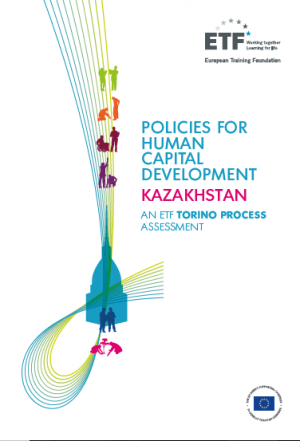This European Training Foundation (ETF) assessment was prepared in 2019 on behalf of national authorities in the Republic of Kazakhstan (hereinafter: Kazakhstan) using a standardised framework questionnaire for national reporting (national reporting framework).
The assessment process included an extensive phase of desk research based on information provided by Kazakhstan in its national Torino Process report (hereinafter: national report)[1] National report of Kazakhstan, prepared within the framework of the Torino Process, 2020. Available at https://openspace.etf.europa.eu/trp/torino-process-2018-2020-kazakhstan-national-report.
and the preparation of an Issues Paper with an overview of themes to be discussed in the present report. These were then finalised in consultation with the ETF country and thematic teams responsible for Kazakhstan at the ETF. An advanced draft of the ETF assessment was circulated to national stakeholders and international partners and discussed at a consultation meeting in Nur-Sultan on 10 December 2019 to verify the findings and recommendations.
At the time of this assessment, the overarching, long-term strategic framework for the development of Kazakhstan is Development Strategy 2050, which envisages the realisation of seven long-term priorities. One of them refers to knowledge and skills as the main anchors of the modern system of education and human capital development (HCD) to which the country aspires. Some of the more ambitious goals in the strategy are to double the share of highly skilled graduates and to increase the educational attainment of the adult population.
At an education and VET sector level, the strategic actions and aspirations that guided the policies focused on in this report were described in the State Programme of Education Development 2016–2019[2] Government Decision No. 460 of 24 July 2018: State Programme for Education Development 2016–2019.
. This programme was replaced by State Programme 2020–2025 at the end of 2019, when this report was finalised for review[3] Government Decision No. 988 of 27 December 2019: State Programme for Education Development 2020–2025.
. Both the old and the new state programmes retain a focus on teachers, quality and equity, the elimination of regional and urban-rural disparities, the development of quality assurance systems, ICT and digitalisation and a transition from a system of formal education to a system of lifelong learning and research. Furthermore, Kazakhstan is an active participant and partner in a number of international initiatives and projects.
In this strategic context, the main question at the heart of this ETF assessment is whether the long-standing, considerable financial and political investment made by Kazakhstan in the area of human capital development and VET, as well as its achievements in relation to reform in this area, are wide-reaching and deep enough to bring the country closer to its long-term goal of becoming one of the most competitive economies in the world by 2050.
While there is ample evidence to suggest that Kazakhstan is on track to achieve this, the report also draws attention to three major challenges and numerous policy-related gaps around each challenge, which may create risks further down the road by slowing down the pace of positive change and undermining its sustainability and impact. These challenges include the ineffective distribution and use of state-sponsored opportunities for human capital development as a result of the unsatisfactory quality and limited relevance of teaching and learning in VET, which hampers the anticipated contribution of VET to the strategic development of the country, and deficiencies in workforce development caused by a lack of adult education.

